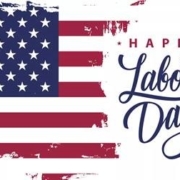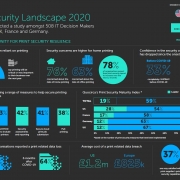If we’re all so busy, why isn’t anything getting done?
Most executives say they frequently find themselves spending way too much time on pointless interactions.
Three critical collaborative interactions
What can be done? We’ve found it’s possible to quickly improve collaborative interactions by categorizing them by type and making a few shifts accordingly. We’ve observed three broad categories of collaborative interactions (exhibit):
- Decision making, including complex or uncertain decisions (for example, investment decisions) and cross-cutting routine decisions (such as quarterly business reviews)
- Creative solutions and coordination, including innovation sessions (for example, developing new products) and routine working sessions (such as daily check-ins)
- Information sharing, including one-way communication (video, for instance) and two-way communication (such as town halls with Q&As)

Below we describe the key shifts required to improve each category of collaborative interaction, as well as tools you can use to pinpoint problems in the moment and take corrective action.
Decision making: Determining decision rights
When you’re told you’re “responsible” for a decision, does that mean you get to decide? What if you’re told you’re “accountable”? Do you cast the deciding vote, or does the person responsible? What about those who must be “consulted”? Sometimes they are told their input will be reflected in the final answer—can they veto a decision if they feel their input was not fully considered?
It’s no wonder one of the key factors for fast, high-quality decisions is to clarify exactly who makes them. Consider a success story at a renewable-energy company. To foster accountability and transparency, the company developed a 30-minute “role card” conversation for managers to have with their direct reports. As part of this conversation, managers explicitly laid out the decision rights and accountability metrics for each direct report. The result? Role clarity enabled easier navigation for employees, sped up decision making, and resulted in decisions that were much more customer focused.
To make this shift, ensure everyone is crystal clear about who has a voice but no vote or veto. Our research indicates while it is often helpful to involve more people in decision making, not all of them should be deciders—in many cases, just one individual should be the decider (see sidebar “How to define decision rights”). Don’t underestimate the difficulty of implementing this. It often goes against our risk-averse instinct to ensure everyone is “happy” with a decision, particularly our superiors and major stakeholders. Executing and sustaining this change takes real courage and leadership.
Creative solutions and coordination: Open innovation
Routine working sessions are fairly straightforward. What many organizations struggle with is finding innovative ways to identify and drive toward solutions. How often do you tell your teams what to do versus empowering them to come up with solutions? While they may solve the immediate need to “get stuff done,” bureaucracies and micromanagement are a recipe for disaster. They slow down the organizational response to the market and customers, prevent leaders from focusing on strategic priorities, and harm employee engagement. Our research suggests key success factors in winning organizations are empowering employees and spending more time on high-quality coaching interactions.
Empowering others doesn’t mean leaving them alone. Successful empowerment, counterintuitively, doesn’t mean leaving employees alone. Empowerment requires leaders to give employees both the tools and the right level of guidance and involvement. Leaders should play what we call the coach role: coaches don’t tell people what to do but instead provide guidance and guardrails and ensure accountability, while stepping back and allowing others to come up with solutions.
Haier was able to use a variety of tools—including objectives and key results (OKRs) and common problem statements—to foster an agile way of working across the enterprise that focuses innovative organizational energy on the most important topics. Not all companies can do this, and some will never be ready for enterprise agility. But every organization can take steps to improve the speed and quality of decisions made by empowered individuals.
Managers who are great coaches, for example, have typically benefited from years of investment by mentors, sponsors, and organizations. We think all organizations should do more to improve the coaching skills of managers and help them to create the space and time to coach teams, as opposed to filling out reports, presenting in meetings, and other activities that take time away from driving impact through the work of their teams.
But while great coaches take time to develop, something as simple as a daily stand-up or check-in can drive horizontal connectivity, creating the space for teams to understand what others are doing and where they need help to drive work forward without having to specifically task anyone in a hierarchical way. You may also consider how you are driving a focus on outcomes over activities on a near-term and long-term basis. Whether it’s OKRs or something else, how is your organization proactively communicating a focus on impact and results over tasks and activities? What do you measure? How is it tracked? How is the performance of your people and your teams managed against it? Over what time horizons?
The importance of psychological safety. As you start this journey, be sure to take a close look at psychological safety. If employees don’t feel psychologically safe, it will be nearly impossible for leaders and managers to break through disempowering behaviors like constant escalation, hiding problems or risks, and being afraid to ask questions—no matter how skilled they are as coaches.
Employers should be on the lookout for common problems indicating that significant challenges to psychological safety lurk underneath the surface. Consider asking yourself and your teams questions to test the degree of psychological safety you have cultivated: Do employees have space to bring up concerns or dissent? Do they feel that if they make a mistake it will be held against them? Do they feel they can take risks or ask for help? Do they feel others may undermine them? Do employees feel valued for their unique skills and talents? If the answer to any of these is not a clear-cut “yes,” the organization likely has room for improvement on psychological safety and relatedness as a foundation to high-quality interactions within and between teams.
Information sharing: Fit-for-purpose interactions
Do any of these scenarios sound familiar? You spend a significant amount of time in meetings every day but feel like nothing has been accomplished. You jump from one meeting to another and don’t get to think on your own until 7 p.m. You wonder why you need to attend a series of meetings where the same materials are presented over and over again. You’re exhausted.
An increasing number of organizations have begun to realize the urgency of driving ruthless meeting efficiency and of questioning whether meetings are truly required at all to share information. Live interactions can be useful for information sharing, particularly when there is an interpretive lens required to understand the information, when that information is particularly sensitive, or when leaders want to ensure there’s ample time to process it and ask questions. That said, most of us would say that most meetings are not particularly useful and often don’t accomplish their intended objective.
We have observed that many companies are moving to shorter meetings (15 to 30 minutes) rather than the standard default of one-hour meetings in an effort to drive focus and productivity. For example, Netflix launched a redesign effort to drastically improve meeting efficiency, resulting in a tightly controlled meeting protocol. Meetings cannot go beyond 30 minutes. Meetings for one-way information sharing must be canceled in favor of other mechanisms such as a memo, podcast, or vlog. Two-way information sharing during meetings is limited by having attendees review materials in advance, replacing presentations with Q&As. Early data show Netflix has been able to reduce the number of meetings by more than 65 percent, and more than 85 percent of employees favor the approach.
Making meeting time a scarce resource is another strategy organizations are using to improve the quality of information sharing and other types of interactions occurring in a meeting setting. Some companies have implemented no-meeting days. In Japan, Microsoft’s “Work Life Choice Challenge” adopted a four-day workweek, reduced the time employees spend in meetings—and boosted productivity by 40 percent.1 Similarly, Shopify uses “No Meeting Wednesdays” to enable employees to devote time to projects they are passionate about and to promote creative thinking.2 And Moveline’s product team dedicates every Tuesday to “Maker Day,” an opportunity to create and solve complex problems without the distraction of meetings.3
Finally, no meeting could be considered well scoped without considering who should participate, as there are real financial and transaction costs to meeting participation. Leaders should treat time spent in meetings as seriously as companies treat financial capital. Every leader in every organization should ask the following questions before attending any meeting: What’s this meeting for? What’s my role? Can I shorten this meeting by limiting live information sharing and focusing on discussion and decision making? We encourage you to excuse yourself from meetings if you don’t have a role in influencing the outcome and to instead get a quick update over email. If you are not essential, the meeting will still be successful (possibly more so!) without your presence. Try it and see what happens.
High-quality, focused interactions can improve productivity, speed, and innovation within any organization—and drive better business performance. We hope the above insights have inspired you to try some new techniques to improve the effectiveness and efficiency of collaboration within your organization.











